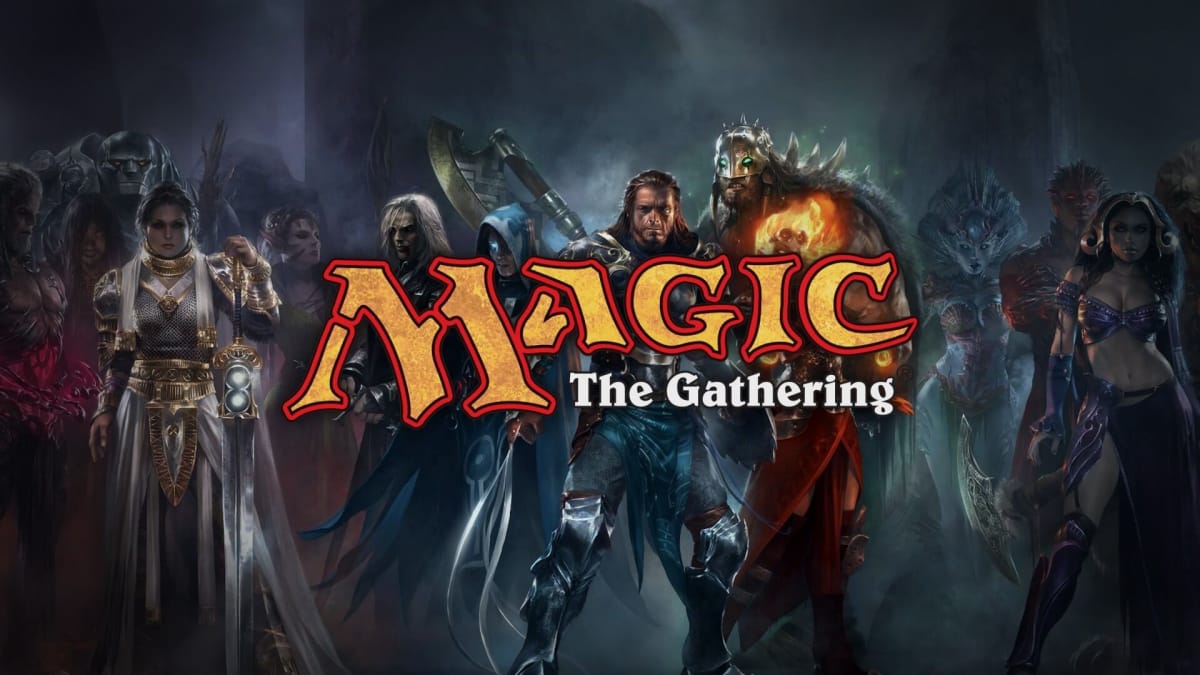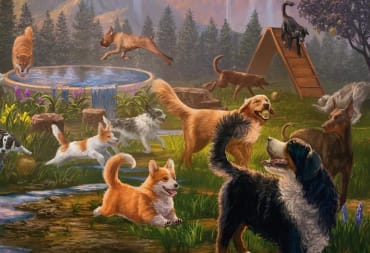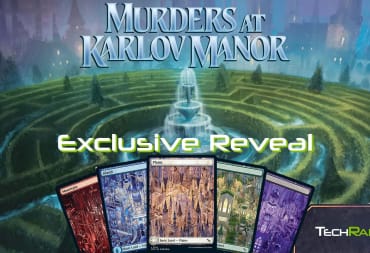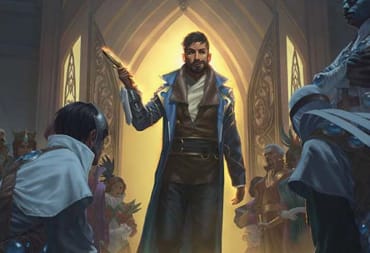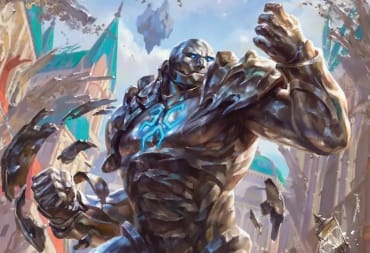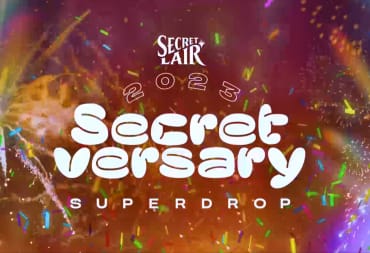Magic: The Gathering
Magic: The Gathering is a collectible card game (CCG), where players create decks to beat their opponent. It was created by Richard Garfield and released in 1993 by Wizards of the Coast, it has made its way to millions of players and is still the most popular CCG on the market.

You can buy all the Magic The Gathering Products from our Tabletop Sponsor, Firestorm Games.
What is a collectible card game?
Unlike a traditional card game, Magic: The Gathering has a focus on building your own decks and trading cards. This can be anywhere from trading with your friends to spending $160,000 on an Alpha Black Lotus. Don't worry, we'll get into that soon enough.
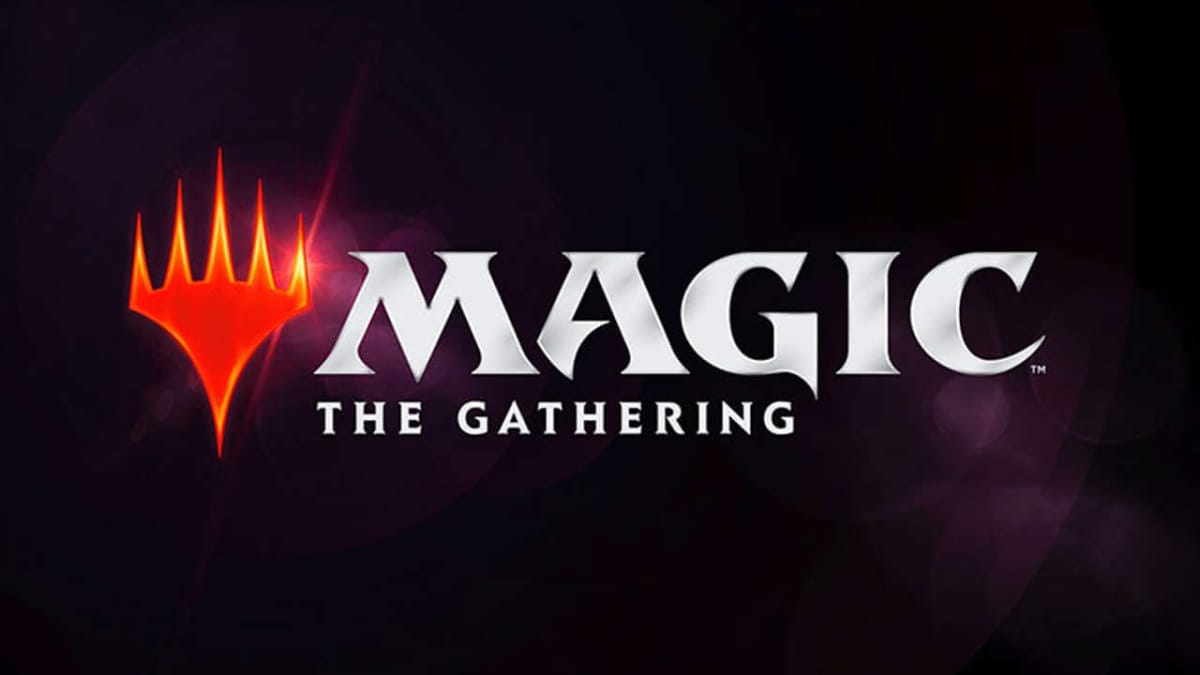
Brief History of Magic: The Gathering
Initially conceived as a spin-off, of sorts, from the Dungeons and Dragons world, Richard Garfield envisioned "Five Magics" as a way of bringing the world of D&D into a less linear and more concisely written universe. Instead of following the open-world design of D&D, he wanted something more intentional and better written.
After spending 1991 to 1993 building it, he brought it to the representative of Wargames West who funded the initial release. It was such a success, selling over 10 million cards in the first few months, they held back on advertising as they couldn't keep up with the demand.
Taking your turn
While there are tons of ways to play Magic: The Gathering, most of them rely on a few rules. This is how you play. Each player has one deck consisting of anywhere between 60 to 100 cards. You shuffle them, decide who goes first, and draw 7 cards. At the start of every turn, you draw one card, unless otherwise stated. The first player to act does not draw a card on their first turn.
Take every rule from here with one caveat, after every sentence, add the turn "unless otherwise stated". Magic: The Gathering is very fond of setting up rules and then tearing them down with new rules. Most defined laws of how to play can be messed with at will with other cards. These are basic rules but other cards can undermine them.
Turns are broken up into smaller segments that go as follows:
Draw/upkeep
Main phase 1
Combat
Main Phase 2
Endstep.
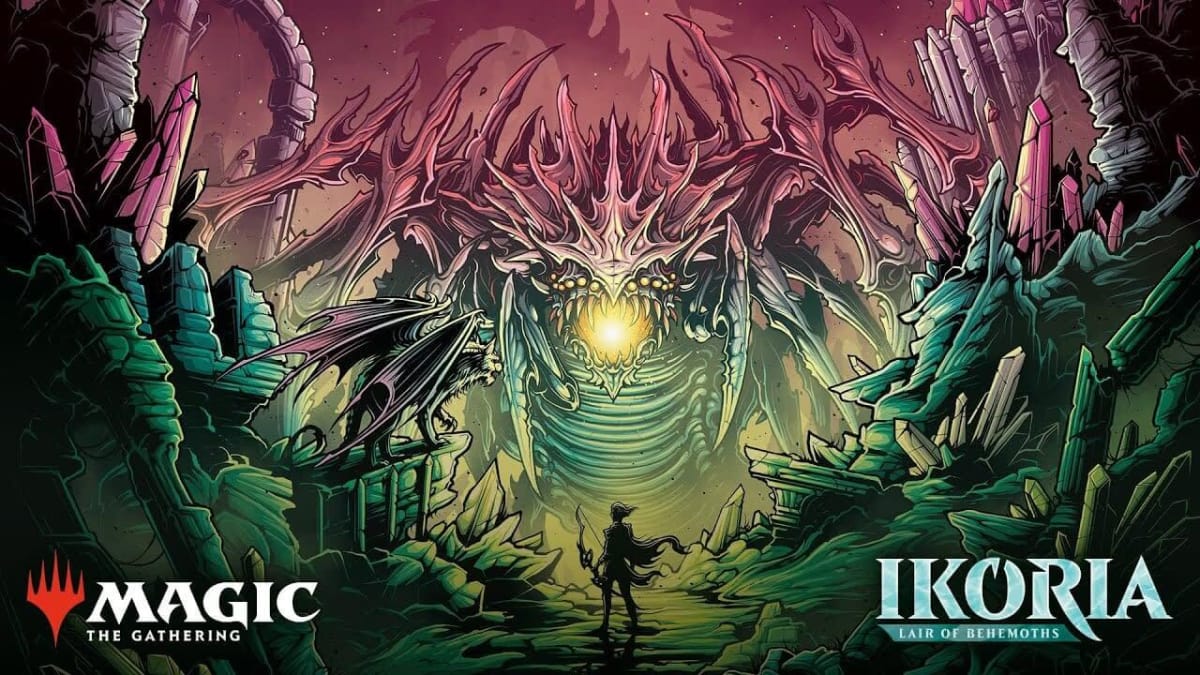
You may play 1 land per turn but only on 1 of 2 main phases. Land generates mana which can be used to cast creatures/ spells/ equipment etc. Every turn, you can "tap" the land you have, allowing you to play mana. 1 land taps for 1 mana, generally speaking. On your draw/upkeep, untap everything you tapped last turn. Sorceries, creatures, and equipment can only be played on one of your main phases. Instants and abilities can be played at any point
Combat gives you the chance to fight with your creatures. You tap a creature to signal it is attacking and that attack goes towards a player, not a creature. The person defending then chooses which of their creatures block the attacker. Keep in mind you can block 1 attacking creature with multiple others. The key to combat is a creature's power (indicated in the anatomy of the card section) pairs with a blocking creatures toughness and the blocking creature power goes against the attacking creature's toughness. Essentially, creatures trade blows at the same time. If one creature has 1 power and 2 toughness, it means it will deal 1 damage and 2 needs to be done in order to kill it. If a creature dies, it is sent to your graveyard and you can only get him back onto the field with certain abilities.
The goal of any match is generally to get your opponent's life down to 0 but there are many "win conditions" in Magic: The Gathering that define how you should play.
The basics/anatomy of the card in Magic: The Gathering
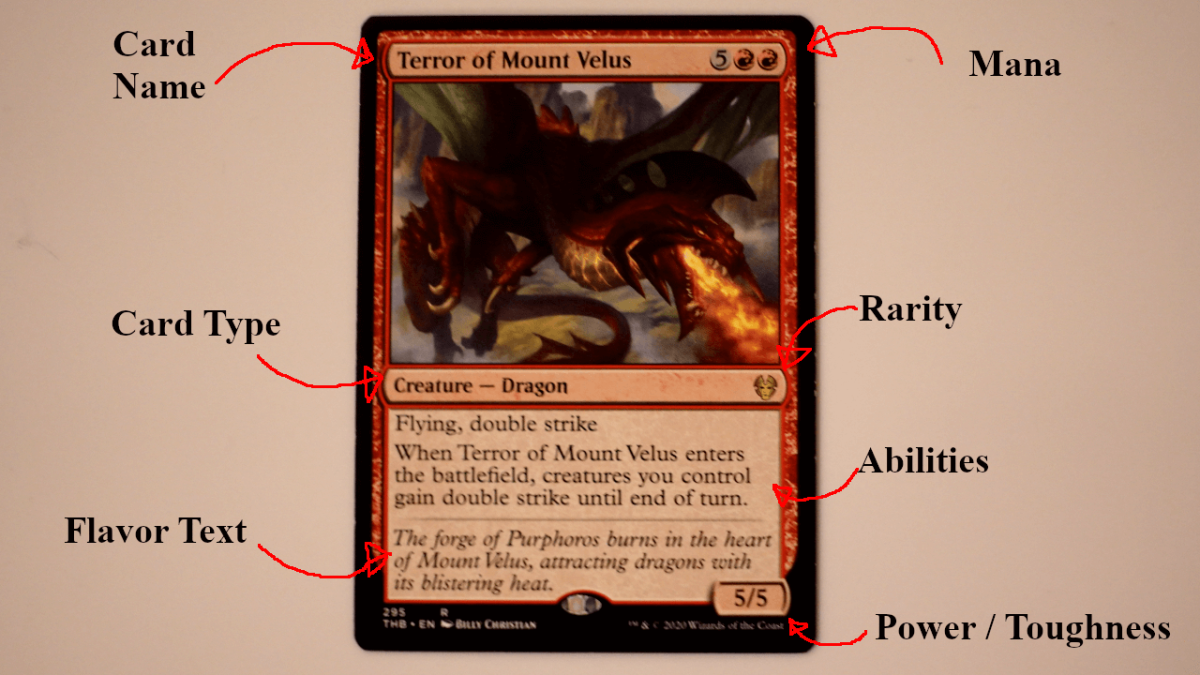
There are a few key parts of a card:
Card Name: This is how you distinguish between cards.
Card Type: This is one of the most important parts of the card. A card type defines when it can be played and what effect other cards will have on it.
Flavor Text: This is just worldbuilding, it's unimportant to the match but fun to read.
Mana: This defines how much mana you need to play each card. The card above has 2 fire and then a colorless 5. This means he costs 7 to play, 2 of which has to be fire, the rest can be any color combined
Rarity: Information about what set they are from and how rare they are, important to collectors
Abilities: Creatures all have different effects that make them unique. There are many. Learn yours and your opponents and you should be fine starting out.
Power/Toughness: This is important for combat as they pair toughness and against power and vice versa
Colour Types
There are 5 main colors to Magic: The Gathering with a few more unique ones added over the last couple of decades.
Black: Black deals with death mostly. It is an amoral color often misinterpreted as evil due to its use of scary monsters and some coll abilities. It deals with death and resurrection in its core mechanics and has a very gothic theme
Blue: This often associated with "control" Blue deals with a lot of spells and often works by disrupting what your opponent is doing, rather than focusing on itself. A good blue player will likely play more cards on your turn than their own.
Red: Red is quick and ferocious. With strong creatures and fast hits, it can be very dangerous in the short term. Known for fiery beasts, goblins, and more, this is the deck for a quick player.
White: This plays into a few tropes of the genre like the divine and the orderly. It is well known for humans, angels, and things of that nature. This, like red, tends to be fairly straight forward and rather self-centered in its spells.
Green: Relying on the land, green is very popular for getting lots of mana sources out there and using them to get huge hulking beasts onto the field. This tends to have a slower start
Like everything else in Magic: The Gathering, there are caveats to these rules but this is a decent way to look at each color type
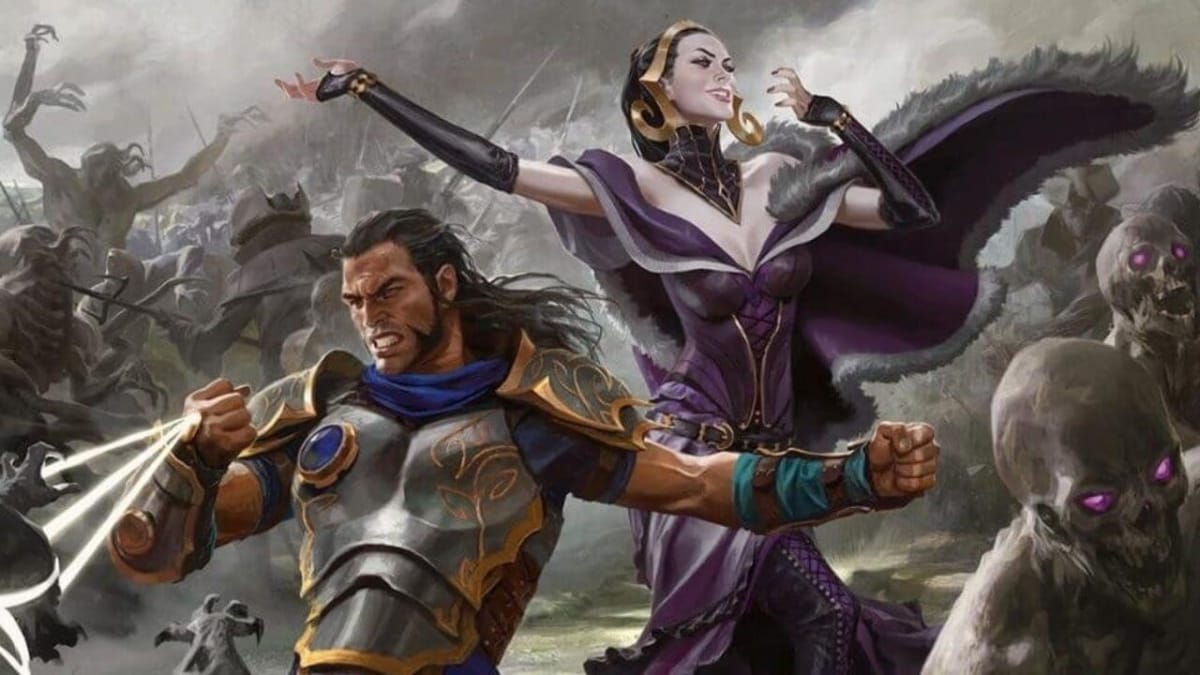
Where should you start Magic: The Gathering first
Magic: The Gathering can be a rather complicated game. The best way of learning is by doing or watching. This is a rough guide on the different ways to play and where a beginner should start.
Where you start will likely depend on a few things. Do you have friends who play Magic? Do you have friends willing to try? What investment are you looking for? How seriously do you want to play it?
If you are really new and don't want a large investment, a cheap starter kit isn't a bad way of starting. It likely won't entertain you for too long if you really like it but it's a low-risk entry. The likes of the "Spellslinger" Starter kit is no more than a couple of dollars/euros/pounds and often gets given away at events. It only comes in singular color decks and those decks are red and white which are two of the easiest to use. As well as this, they come with a brief explanation on how to play and two 20 sided dice for keeping track of your health. This is a decent way of just trying it.
Game Night
Game Night is pretty expensive but comes with 5 premade mono-color decks, 5 dice, a counter to keep track of abilities, and a few more things. If you have a group of friends who want to try it together, this is a great way to start your own game nights.
Commander
Being one of the most popular ways to play Magic: The Gathering, Commander is a great way to start as it means you will likely have a lot of people to play against. You get premade decks that are genuinely quite playable, interesting and fun. A few minor changes to the setup of a commander deck can get you something that's almost tournament level. This has a few key rules changes from standard Magic. Your health pool is higher, you have exactly 100 cards in your deck and you have one commander you can play at any point. The key is that if he dies, he can go to your grave or to your command zone where he nows costs a little more mana. You have to tactically decide when is best to play him as all your opponents will know you have him. This is best played with a group of friends and a lot of conversation.
There are plenty more ways to play Magic: The Gathering that we will likely cover right here on TechRaptor but most players are better of starting with a standard deck and moving their way to commander to get a feel for the different mechanics before making their way further.
Arena
As it's rather hard to leave the house right now and even harder to interact with friends, Arena is a great way of playing Magic. It is essentially what you would play on the table but online. Buying new packs or sets gives you codes that you can redeem for booster and card packs online. It is best collected in tandem with physical Magic.
Deckbuilder's Toolkit
The Deckbuilder's Toolkit is great for beginners who want to build their own decks or understand how mechanics work. Each set is cheap, costing less than 1 commander deck, and comes with loads of lands, creatures, and a handful of booster packs. They are split up between the mana colors and each set tends to focus on core mechanics like equipment, auras, or more. Spending an hour or so organizing and building a deck or 2 from it is a great way of understanding cards you will likely fight against. Stocking on the knowledge of cards and understanding what might be thrown at you is an important step in understanding how to play Magic.
Magic is a complex game. There is so much to learn that players who play for years will still be stumped by the odd card or mechanic. The best way to get started is just to play it. This guide should set you up so you don't feel entirely lost but it might take years to fully familiarise yourself. This being said, it is so worth it. Combining great stories, fun tactics, and surprisingly complex ideas, there is a reason why this is one of the most popular games in the world. If you are looking for specific guides or tips for certain modes, make sure to let us know. Get out there and sling some spells.
Have a tip, or want to point out something we missed? Leave a Comment or e-mail us at tips@techraptor.net
